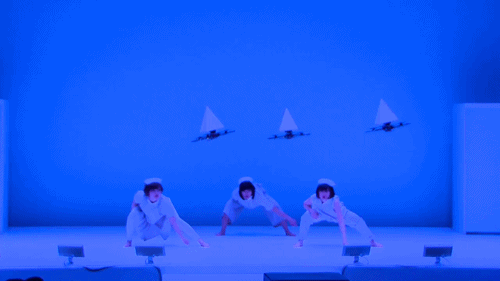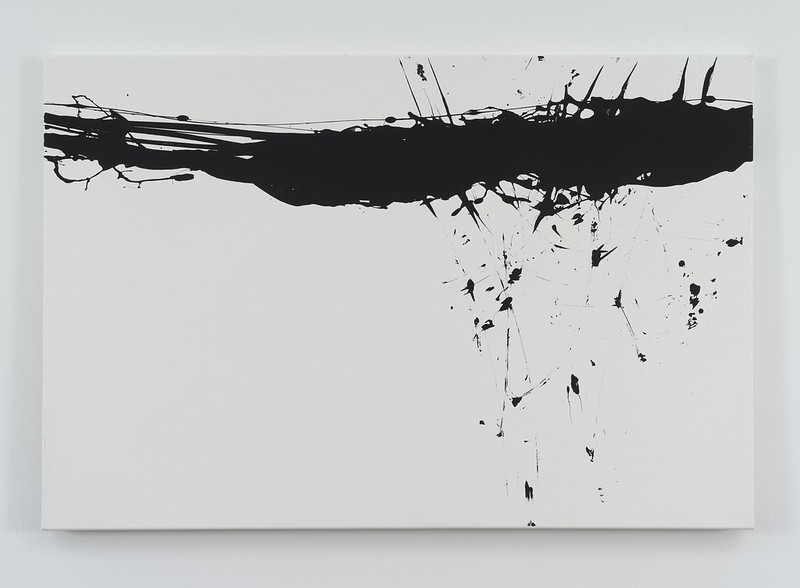
The Portals are multimedia collections covering a variety of issues relating to drones. For our full list of portals, click here.
The emergence and proliferation of drone technology has inspired a vibrant response from the art world. Drone art includes both works that are created using drone technology and works that in some way address or depict the drone. These artworks sometimes serve as a medium for protesting military drone use and state surveillance, other times they are used in promoting the technology, and in some cases, the drone itself is simply a tool for the creation of the artwork. Some artists have picked up the visual motif of the drone as an emblem for contemporary preoccupations with surveillance, privacy, artificial intelligence, and remote warfare. Depictions of the drone appear widely in the art world, suggesting contemporary preoccupations and fascinations with this technology.
Examining drone art provides an opportunity to consider how society is responding to this technology and incorporating it into its cultural vocabulary. Drone art is also a case study in how new transformative technologies are adopted by artists, sometimes as a means of protesting against the technology itself and other times as a way to champion it.
This Portal is curated by Arthur Holland Michel.
- “Visibility Machines: A Conversation with Harun Farocki and Trevor Paglen” – National Gallery of Art // Audio // 01:15 // November 4, 2013
Farocki and Paglen are two of the most influential artists to have explored state surveillance, technology, and drones. “Investigating forms of surveillance, espionage, war-making, and weaponry, Farocki and Paglen address the vast implications of such activities for image-making, and the media they are creatively working with, namely film and photography.”
- “Rethinking the View from Above: A discussion with Yael Messer and Gilad Reich” – Apex Art and Center for the Study of the Drone // Video // 01:00 // September 16, 2014
Center for the Study of the Drone co-director Arthur Holland Michel sits down with Decolonized Skies curators Yael Messer and Gilad Reich to talk about the evolution and future of the view from above and how civilians can re-appropriate traditional tools of government surveillance for art, research, and activism.
- “The New Cartography: Eyal Weizman and Laura Kurgan in Conversation” – Apex Art // Video // 00:41 // September 18, 2014
“Kurgan and Weizman [ ] discuss the implementation and implications of new, multiplatform cartographic practices that employ drones, satellite imagery, census data, personal narratives, and onsite drawings, among other resources.”
- James Bridle – Lighthouse Arts // Video // 00:57 // September 12, 2013
Prolific British drone artist James Bridle, creator of the Drone Shadows (see portfolio) and Dronestagram, speaks about his exhibition “A Quiet Disposition,” which examines drones and drone warfare.
- “A Conversation with Natalie Jeremijenko” – Center for the Study of the Drone // Audio // 00:20:43 // Spring 2013
Artist Natalie Jeremijenko, one of the creators of the Bureau of Inverse Technology’s BIT Plane project, discusses the potential that drones have as tools for social and environmental change.
- “Conversation with American photographer David Maisel” – Lens Culture // Audio // 0:25:00 // April, 2005
Aerial photographer David Maisel discusses the power and intricacy of the aerial view. He explains what he describes as an alternate reality created by the view from above. Maisel’s book Black Maps is a collection of vibrant bird’s-eye aerial photographs.
- “Drone Operator” – Pechakucha 20X20 // Audio and Slideshow // 0:06:00 // March 3, 2014
Musician John Langford describes how his son has started painting graffiti drones around the city of Chicago and wonders why. He then performs his song “Drone Operator.”
Portfolio
In 1995, the Bureau of Inverse Technology flew a rudimentary camera-equipped remote-control airplane over a number of technology company campuses in Silicon Valley.
Pakistani artist Mawhish Chishty renders drones in a millenial miniature art painting style.

James Bridle’s Drone Shadows are 1:1 scale outlines of various military drones, painted in public spaces in various cities.

Omer Fast’s short film, 5,000 ft. is Best, explores the experience of remote killing by depicting a fictionalized drone strike based on the testimony of a real (but anonymous) drone pilot.
John Vigg’s Drone Selphies project imagines advanced drones that become self-obsessed and take photos of their own shadows.

Japanese dance company Eleven Play and artist/hacker Daito Manabe produced a dance recital featuring three dancers interacting with three quadcopter drones.

Addie Wagenknecht uses drones to create abstract impressionist paintings

LOOP>>60Hz: Transmissions from The Drone Orchestra by Liam Young and John Cale, is an orchestral performance featuring drones.
Readings
Rothstein, Adam. “The Complexities of Drones in Art.” The Creators Project, 21 Nov, 2014. Web
Harger, Honor. “Unmanned Aerial Ecologies: proto-drones, airspace and canaries in the mine.” Honor Harger, April, 2013. Web
Cole, Teju. “Seven short stories about drones.” The New Inquiry, 14 Jan, 2013. Web
Lange, Christy. “Blurred Visions.” Frieze, 24 May 2013. Web
Holland Michel, Arthur. “Interview: KATSU and The Graffiti Drone.” Center for the Study of the Drone, 10 Apr 2014. Web
Harkinson, Josh. “Friendly Fire: Drones As Folk Art.” Mother Jones, 24 Jun, 2013. Web
Blogroll
For updates, news, and commentary, follow us on Twitter.
[includeme file=”tools/sympa/drones_sub.php”]
